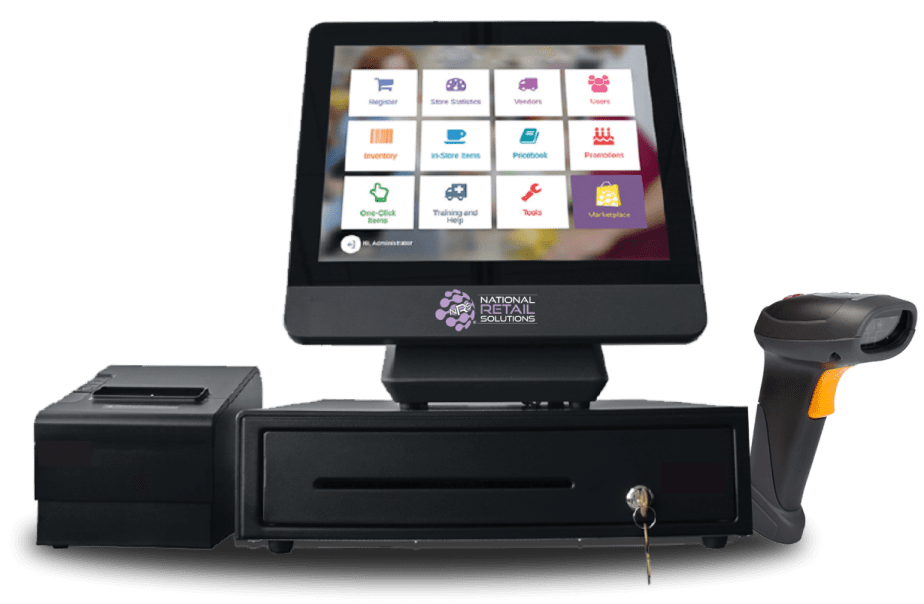Just How POS System Works: A Comprehensive Guide for Entrepreneur

Understanding the Parts of a POS System

How Sales Deals Are Refined
When a consumer makes a decision to make a purchase, the sales purchase initiates a series of methodical steps within the POS system. Initially, the cashier inputs the things being purchased, which are scanned with a barcode viewers or manually gone into. This activity gets item information, consisting of rates and relevant tax obligations, from the system's database.Next, the client is provided with the total amount due. The POS system after that processes the settlement, whether through cash, credit report card, or mobile payment methods (Restaurant POS Software). For electronic repayments, the POS firmly communicates with settlement cpus to license and validate the transaction.Once the settlement is validated, the system produces an invoice, which can be printed or sent digitally. This receipt serves as evidence of purchase for the client. Finally, the deal data is taped in the system, making certain exact sales records and economic monitoring for business
Stock Management and Monitoring

Reliable stock management and monitoring are necessary parts of a POS system, as they assure that organizations maintain optimal stock levels and lessen discrepancies. A durable POS system enables real-time supply updates, mirroring sales and returns immediately. This makes it possible for company owner to monitor stock levels properly, making sure that popular things are conveniently offered while stopping overstocking of less preferred products.Additionally, advanced POS systems provide attributes such as automatic stock alerts and reorder pointers, simplifying the purchase process. Barcoding and RFID modern technology improve accuracy in tracking inventory movement, lowering human mistake. Substantial coverage tools give insights into supply turn over rates, assisting companies make educated decisions concerning buying and product offerings. Eventually, efficient stock administration with a POS system not only enhances operational performance yet also enhances client satisfaction by making sure item schedule.
Evaluating Client Data and Insights
Client data analysis acts as a powerful device for organizations utilizing a POS system (Restaurant POS Software). By checking out and gathering purchase information, companies can reveal important insights concerning customer actions and choices. This evaluation allows them to determine acquiring fads, peak shopping times, and preferred products, thereby informing supply decisions and advertising strategies.Additionally, services can section their consumer base, discover this info here enabling individualized advertising and marketing initiatives that deal with certain demographics or acquiring routines. Recognizing client loyalty patterns likewise assists in creating targeted promotions and incentives programs.The data obtained from a POS system can additionally reveal understandings right into consumer comments, allowing businesses to make enlightened decisions pertaining to product offerings and solution enhancements. Eventually, leveraging client data efficiently can enhance the general purchasing experience, foster customer contentment, and drive revenue growth
Advantages of Executing a POS System

Frequently Asked Inquiries
What Kinds Of Services Can Gain From a POS System?
Numerous services take advantage of a POS system, consisting of retail stores, restaurants, salons, and ecommerce systems. These systems improve purchases, stock administration, and customer data, enhancing operational efficiency and improving customer experience across diverse industries.
Just how much Does a POS System Commonly Cost?
The price of a POS system usually ranges from a couple of hundred to several thousand bucks, depending upon features, hardware, and software application. Services must consider continuous charges for deal, upkeep, and support handling when budgeting.
Can I Incorporate a POS System With Existing Software?
Incorporating a POS system with existing software is commonly feasible. Several systems offer APIs or built-in compatibility attributes, enabling organizations to improve procedures and boost capability by linking different software application applications successfully.
What Training Is Required for Personnel to Use a POS System?
Educating for team to utilize a POS system typically consists of understanding software performances, refining purchases, managing stock, and dealing with client communications. Practical demonstrations and hands-on practice enhance efficiency and self-confidence in making use of the system efficiently.
What Takes place if the Web Goes Down While Making Use Of a POS System?
Purchases might be disrupted if the internet goes down throughout POS system usage. Numerous systems offer offline capacities, enabling standard operations to proceed, but complete performance, consisting of real-time stock updates, will certainly be restricted. A Point of Sale (POS) system is composed of numerous key parts that work together to help with deals and manage service operations. Reliable stock monitoring and tracking are essential elements of a POS system, as they assure that businesses preserve excellent stock degrees and minimize disparities. Customer information analysis offers as a powerful device for companies making use of a POS system. Recognizing consumer commitment patterns additionally aids in developing targeted benefits and promotions programs.The information obtained from a POS system can additionally expose see here insights into client feedback, making it possible for services to make enlightened choices concerning item Bonuses offerings and solution renovations. Implementing a POS system provides various advantages that can considerably improve service operations.